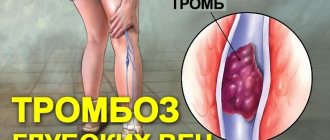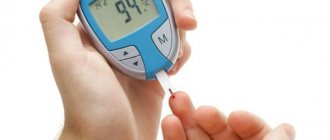The subtitle of the article may seem somewhat provocative. “How to save your legs...” Unfortunately, this is the question that those who are faced with a diagnosis of “diabetic foot” have to look for answers to.
THE INSANE OF DIABETIC FOOT
I have no doubt that the name of this terrible syndrome is well known to all those suffering from diabetes. Doctors probably talked about precautions and warned about symptoms. But unfortunately, diabetes is difficult to control, and diabetic foot syndrome can take decades to develop. Slow changes do not attract attention until the development of the pathology enters the “high” stage.
A FEW NUMBERS
I don’t want to scare anyone, but I think that every person with diabetes should know these statistics. This is an excellent incentive for strictly following the rules of prevention. So
- The diagnosis of “diabetic foot” confidently ranks first in the number of amputations in non-war times.
- Diabetes mellitus greatly (up to 47 times!) increases the risk of amputation.
- After amputation, patients are at risk of amputation of the second limb within three years with a probability of up to 30%.
- The risk of repeat amputation within five years increases to 51%.
These numbers are too eloquent to be ignored.
DIABETES DESTROYS VESSELS
The peculiarity of human anatomy is such that surges in blood sugar have a destructive effect on the blood vessels of the lower extremities. Irreversible damage to small-diameter arteries occurs and, accordingly, circulatory impairment. The so-called ischemic form of diabetic foot occurs - due to insufficient nutrition, tissues on the legs degrade, non-healing wounds form and grow, bone tissue, nerves, joints, and tendons are destroyed. There is a growing serious risk of developing gangrene, sepsis, and amputation.
DIABETES KILLS NERVES
High blood sugar levels lead to decreased conductivity of nerve fibers located in the feet. As a result, sensitivity is lost and the risk of accidental injury increases dramatically. The patient simply does not notice the damage to the legs, and ischemia does not allow the wounds to heal. The disease is progressing.
DIABETIC FOOT: DIAGNOSIS
Diagnosis of diabetic foot syndrome is a complex medical task. A hardware examination of the condition of the arteries is required, the condition of the bones of the foot is determined, and sensitivity is analyzed - tactile, temperature and vibration. A bacterial analysis and, of course, a detailed blood test are required.
The vascular surgery clinic has installed the most advanced equipment to date, which allows you to quickly and accurately determine the condition of the limbs and create an adequate treatment strategy.
TREATMENT OF DIABETIC FOOT: REMEMBER ABOUT DIABETES!
I must emphasize that when treating diabetic foot, you must always remember the root cause of the disease - diabetes. Qualified observation by an endocrinologist, strict adherence to recommendations and prescriptions, as well as constant monitoring of glucose levels are required. Normalization of carbohydrate metabolism is a fundamental condition for successful treatment.
Your name:
Your phone number:
Send
In diabetes, the condition of the legs is primarily monitored
In nephropathy, the ankles are the first to be damaged. A diabetic should have their ankle checked at least once a year, and even more often if peripheral neuropathy is diagnosed.
A thorough ankle examination involves examining the skin, muscles, bones, circulation and sensation. Sensitivity is studied using a special brush or light pressure with a sharp object. Loss of sensation increases the risk of ankle sprains and ulcers, which can be difficult to treat if you have diabetes.
If necessary, the patient's legs perceive temperature and vibration are checked.
Loss of sensation
Diabetes mellitus “clogs” small vessels, starting from capillaries (microangiopathy). Vision is the first to suffer, then other small vessels join. The foot is the organ farthest from the heart, so the blood vessels in the foot are especially susceptible to blockage. Losing blood supply and nutrition, the foot begins to lose sensitivity due to a decrease in the functioning of nerve fibers. The feet no longer react to temperature and lose sensitivity even to light touches. It becomes easy to injure your feet even while walking. With constant high sugar levels, ulcers may develop on the plantar part of the foot in areas of greatest pressure. In diabetics, tissue healing is poorer and wounds require longer treatment because the body's recovery occurs more slowly.
Other studies
The doctor may also consider other tests necessary:
- Electromyography
- to determine the type and extent of nerve damage. A special device sends an electrical current to the nerve, and the electromyogram shows how the muscles respond to the electrical impulses delivered through the nerves; - Heart rate variability
. The doctor must know how the heart reacts to deep breathing, exercise, blood pressure and other changes; - Ultrasound examination of the pelvis and other systems
. Using ultrasound, the structural state of organs and some functions are assessed. For example, how the bladder works.
Electromyography
Pelvic ultrasound
Focal neuropathy
This type of neuropathy usually occurs suddenly, affecting the nerve fibers of the head, torso, and limbs. It is characterized by pain of varying strength and muscle weakness. In addition to these signs, Bell's palsy, which affects one side of the face, double vision, and pain in the chest or abdomen, which is often mistaken for a heart attack or appendicitis, may occur.
If one or a complex of the above symptoms are detected, patients suffering from diabetes should consult a specialist for differential diagnosis of diabetic neuropathy with other diseases with similar symptoms, such as alcoholic neuropathy, neuropathy that occurs while taking neurotoxic drugs or exposure to toxic chemicals (solvents, heavy metal compounds, etc.).
Glucose regulation is the only treatment option for nephropathy
The first step in treatment is to regulate glucose levels, which is also the only way to prevent nerve damage. This method requires regular monitoring, proper nutrition and physical activity. Depending on the condition, these measures may be supplemented with tablets that affect glucose levels or insulin.
If glucose levels rise sharply, signs of neuropathy will worsen. In this case, glucose needs to be reduced as soon as possible - the signs of neuropathy may not subside immediately, but the condition will certainly improve over time.
Depending on the type of nerve damage and complaints reported, the endocrinologist will also use other treatments to improve symptoms.
Peripheral neuropathy
Peripheral diabetic neuropathy occurs predominantly in the lower extremities and is characterized by burning and painful sensations in the legs, often occurring at night, a feeling of sudden heat or cold, and pins and needles in the legs. Patients are very sensitive to touch, sometimes it is even painful. Deformations of the muscles of the limbs may be observed. Any damage. violating the integrity of the skin of the extremities become wounds that do not heal over a long period.
Pain management
Many painkillers help relieve the pain of nephropathy. For severe pain, a combination of several medications is prescribed. Antidepressants, anticonvulsants, opioids and other medications are used for this purpose, although they all have side effects. Some of the painkillers are not recommended for older people and people with heart disease. As for over-the-counter pain relievers (paracetamol, ibuprofen), some experts advise patients not to take them because they are not enough to relieve neuropathic pain, but they have serious side effects.
Painkillers
External remedies are also used to relieve pain, especially effective for use on the ankles. The doctor may prescribe a cream containing capsaicin, lidocaine, nitrate spray, etc. In some patients, the condition is alleviated by alpha-lipolic acid, endotracheal oil and other means.
For patients with increased sensitivity to the feet and touching, for example, a blanket, a special device is used - a frame that holds the blanket in the air.
Some patients relieve pain with acupuncture, bio-communication, and physical therapy. But the effects of electrical stimulation on nerve pain, magnetic therapy, laser therapy and phototherapy have not yet been studied.
Treatment of painful diabetic polyneuropathy
Diabetic distal symmetric sensorimotor polyneuropathy (DPN) is the most common type of diabetic neuropathy, which is detected in more than 50% of patients with diabetes mellitus (DM) type 1 and 2 [1]. DPN is the second most common cause of neuropathic pain (NP). The prevalence of DPN varies depending on the diagnostic criteria used. The frequency of neuropathy diagnosed based on symptoms is about 25%, and when conducting an electroneuromyographic study - 100% in patients with diabetes [2].
The diagnosis of DPN is based on a carefully collected history, neurological examination, and electrophysiological study. Typical symptoms are a crawling sensation, burning sensation, pain in the legs and feet, and muscle cramps at night. A neurological examination reveals weakened Achilles reflexes, sensory disturbances of the “socks” and “gloves” type, and decreased proprioceptive sensitivity. If treatment is not started in a timely manner and therapy is ineffective, complications of DPN develop, such as foot ulcers, which can lead to necrosis, gangrene (diabetic foot) and often to amputations. Patients with diabetes require an annual neurological and clinical examination of the foot [3].
It is generally accepted that the main cause of the development of DPN is elevated glucose levels [4]. Accordingly, the only proven treatment capable of slowing and even to some extent reversing the progression of DPN is good glycemic control in patients with insulin-dependent diabetes. In patients with intensive diabetes therapy (3 or more insulin injections per day or continuous subcutaneous infusion of insulin using an insulin pump (HbA1c level in the range of 6.5–7.5)) there was a significant reduction in the risk of developing microvascular complications and neuropathy [5] . Intensive treatment with sulfonylureas in patients with non-insulin-dependent diabetes also led to a decrease in the incidence and progression of neuropathy [6]. However, only achieving normoglycemia is not able to quickly eliminate the clinical manifestations of DPN. In this regard, additional pathogenetic and symptomatic treatment is required, especially to relieve pain.
Pathogenetic drugs include alpha-lipoic (thioctic) acid (Espa-lipon, Thioctacid, Thiogamma, Thiolepta). These drugs are the gold standard for pathogenetic treatment of DPN. Alpha lipoic acid is a powerful lipophilic antioxidant. Thioctic acid, accumulating in nerve fibers, reduces the content of free radicals; increases endoneurial blood flow; normalizes the content of NO, a regulator of relaxation of the vascular wall (if there is a lot of it, as in diabetes, then it begins to act as a free radical); improves endothelial function; reduces the level of total cholesterol, increases the level of the antiatherogenic fraction of high-density lipoproteins. A number of studies have shown that the use of alpha lipoic acid at a dose of 600 mg/day IV or orally for three weeks to six months reduces the main symptoms of DPN, including pain, paresthesia and numbness, to a clinically significant extent [7, 8]. . It is considered optimal to prescribe intravenous drips of alpha-lipoic acid (600 mg per 200 ml of saline) at the beginning of treatment for 3 weeks (15 droppers), followed by 600 mg of the drug in tablet form (once a day 30–40 minutes before food) for 1–2 months.
Drugs that improve the metabolism of affected nerve structures traditionally include B vitamins, due to their neurotropic properties. Vitamin B1 is involved in the synthesis of acetylcholine, and Vitamin B6 is involved in the synthesis of neurotransmitters and the transmission of excitation. Vitamin B12 improves trophism of peripheral nerves. The drug Milgamma tablets has been shown to be highly effective in the complex treatment of DPN. It contains 100 mg of benfotiamine and 100 mg of pyridoxine. The drug is prescribed one tablet 2-3 times a day for 3-5 weeks. It is important that Milgamma contains benfotiamine, the lipid solubility of which is the reason for achieving high concentrations of thiamine in the blood and tissues.
Data on the effectiveness and safety profile allow us to consider alpha-lipoic acid and benfotiamine as first-line drugs for pathogenetically oriented treatment of diabetic polyneuropathy [9].
Two multicenter placebo-controlled studies of 1335 patients with DPN showed that acetyl-L-carnitine 1000 mg three times daily for 6 and 12 months significantly reduced the symptoms of DPN [10].
The direction of pathogenetic therapy is extremely important and largely determines the prognosis. However, treatment is carried out over long courses and is not always accompanied by rapid obvious clinical improvement. At the same time, even with mild DPN, severe pain syndrome can occur, leading to sleep disturbances, depression, anxiety and social maladjustment. That is why, in parallel with pathogenetic therapy, it is extremely important to carry out timely symptomatic therapy for NB.
I would like to immediately emphasize that simple analgesics and non-steroidal anti-inflammatory drugs in the treatment of pain in DPN are not recommended due to their ineffectiveness [11]. Unfortunately, in the world, more than 60% of patients with NB still receive these drugs, which is unacceptable and extremely dangerous with long-term use (complications of the gastrointestinal tract (GIT), liver and blood). The main groups of drugs for the treatment of NB in DPN are: antidepressants, anticonvulsants, opioids, antiarrhythmic drugs, and local agents.
Tricyclic antidepressants (TCAs) were among the first drugs to demonstrate their effectiveness in the treatment of patients with NB [12]. However, only one TCA is registered in Russia - amitriptyline, which is used to treat NP (postherpetic neuralgia, DPN). It is believed that the analgesic effect of TCAs is associated with their inhibition of the reuptake of serotonin and norepinephrine, which results in increased descending activity of noradrenergic and serotonergic systems, which have an inhibitory effect on the conduction of pain impulses along nociceptive pathways in the central nervous system.
In addition to blocking the reuptake of serotonin and norepinephrine, TCAs block alpha1-adrenergic, H1-histamine, and M-cholinergic receptors, which causes a number of contraindications and side effects that limit their use. Side effects include blurred vision, dry mouth, sinus tachycardia, constipation, urinary retention, confusion and/or memory impairment (anticholinergic effects); sedation, drowsiness, weight gain (H1-histamine effects); orthostatic hypotension, dizziness, tachycardia (alpha1-adrenergic effects) [13]. TCAs are contraindicated in patients with acute and subacute myocardial infarction, with impaired intraventricular conduction, with closed-angle glaucoma, and taking monoamine oxidase inhibitors (MAOIs). These drugs should be used with caution in patients with coronary heart disease (CHD), arrhythmia, arterial hypertension, after a stroke, as well as urinary retention or autonomic failure. This circumstance significantly limits the use of TCAs in general medical practice.
The effectiveness of TCAs (amitriptyline, desipramine, clomipramine, imipramine) in the treatment of painful DPN has been shown in a number of randomized, placebo-controlled studies [14]. The most common drugs in this group used to treat painful polyneuropathies are amitriptyline and imipramine [15]. The most widely used is amitriptyline. The initial dose of the drug is 10–12.5 mg at night, then the dose is gradually increased by 10–25 mg every 7 days until the effect is achieved (maximum 150 mg/day). The daily dose is taken once at night or divided into 2-3 doses. With concomitant depression, higher doses of the drug are usually required. If amitriptyline is intolerant, other TCAs may be prescribed, such as imipramine or clomipramine. The trial of antidepressant treatment should last for a minimum of 6–8 weeks, with the patient taking the maximum tolerated dose for at least 1–2 weeks. Although amitriptyline is effective in approximately 70% of patients with NB, significant side effects limit its use. Before prescribing any TCA, a preliminary ECG is required, especially in persons over 40 years of age.
If TCAs are poorly tolerated, tetracyclic antidepressants (for example, maprotiline, 25–100 mg/day) or selective serotonin-norepinephrine reuptake inhibitors (SNRIs) (venlafaxine, 150–225 mg/day, or duloxetine, 60–120 mg/day) may be used. ) [16]. The effectiveness of venlafaxine has been repeatedly proven in studies involving patients with DPN [17, 18], while it does not have the postsynaptic effects characteristic of TCAs (action on M-cholinergic receptors, alpha-adrenergic and histamine receptors). This makes the drug safer than TCAs. The onset of an analgesic effect was noted already in the second week of therapy [19].
Thus, venlafaxine is an effective, safe, well-tolerated drug in the treatment of DPN. Three multicenter, randomized, double-blind, placebo-controlled studies lasting 12 to 13 weeks demonstrated the effectiveness of duloxetine at a dose of 60 to 120 mg/day in patients with painful DPN. The study found a 50% reduction in pain intensity when treated with duloxetine (regardless of the dose used) in 41% of patients, compared with 24% of patients taking placebo [20].
Selective serotonin reuptake inhibitors (SSRIs) (fluoxetine, paroxetine, sertraline, citalopram, escitalopram) cause fewer side effects, but have a less pronounced analgesic effect, which may be due to the lack of a direct effect on noradrenergic transmission. They are indicated mainly in cases where pain is associated with depression, and the patient does not tolerate other antidepressants [16].
Since NB is often accompanied by depression, it is important to choose a drug that effectively affects this psychopathological condition and has a good safety profile. One of these drugs is pipofezin (Azafen) [21]. The mechanism of antidepressant action is based on non-selective inhibition of the reuptake of serotonin and norepinephrine, which leads to an increase in their concentration in the central nervous system. The drug does not have cardiotoxic properties. Due to the lack of anticholinergic action, Azafen can be prescribed to patients with glaucoma and other diseases in which the use of drugs with anticholinergic activity, including imipramine and amitriptyline, is contraindicated. The absence of pronounced side effects allows the drug to be prescribed to patients with somatic diseases and the elderly, primarily in outpatient practice.
Among the anticonvulsants used in the treatment of painful DPN, the most effective are gabapentin (Neurontin) and pregabalin (Lyrica) [22, 23]. The mechanism of action of gabapentin and pregabalin appears to be based on the ability to bind to the alpha-2-delta subunits of voltage-gated calcium channels in peripheral sensory neurons. This leads to a decrease in calcium entry into the presynaptic neuron, resulting in a decrease in the release of the main pain mediators (glutamate, norepinephrine and substance P) by overexcited neurons, which is accompanied by a reduction in pain syndrome. Both drugs are well tolerated and highly effective, observed already in the 1st week of treatment. The most common side effects are dizziness and drowsiness. The starting dose of gabapentin is 100–300 mg at night. Then the daily dose is gradually increased every 3-5 days by 100-300 mg, moving to a three-time dose.
The average effective dose is 1800 mg/day (600 mg 3 times a day), the maximum is 3600 mg/day. Gabapentin dosage titration may take 2 to 8 weeks. Before concluding that the drug is ineffective, its maximum tolerated dose should be taken for 1–2 weeks. In terms of efficacy and safety, pregabalin is approximately equivalent to gabapentin, but unlike gabapentin, it has linear pharmacokinetics, which ensures predictable changes in plasma concentrations of the drug with dose changes. The range of daily doses of preagabalin is 150–600 mg/day in 2 divided doses.
When treating painful DPN, the starting dose may be 150 mg/day. Depending on the effect and tolerability, the dose can be increased to 300 mg/day after 3–7 days. If necessary, you can increase the dose to the maximum (600 mg/day) after a 7-day interval. In accordance with experience with the drug, if it is necessary to stop taking it, it is recommended to gradually reduce the dose over the course of a week. Pregabalin is absorbed more quickly into the blood and has a higher bioavailability (90%) compared to gabapentin (33–66%). As a result, the drug is effective in smaller doses and has a lower frequency and severity of side effects, especially sedation [22, 23].
The use of opioids to treat pain syndromes is possible only if other drugs have no effect. Among the opioids, the most effective in the treatment of painful DPN were oxycodone at a dose of 37–60 mg/day [24] and tramadol (a drug with low affinity for opioid μ-receptors and at the same time being a serotonin and norepinephrine reuptake inhibitor). Treatment with tramadol begins with a dose of 50 mg at night (or 25 mg 2 times a day), after 5–7 days the dose is increased to 100 mg/day. If necessary, the dose is increased to 100 mg 2–4 times a day. The trial of tramadol should last for at least 4 weeks [25]. Opioids are valued for their pain-relieving properties, but drugs in this class also cause extreme and dangerous side effects in the body.
The combination of tramadol with paracetamol (Zaldiar) allows you to reduce the dose of tramadol and thereby the risk of side effects without sacrificing the analgesic effect [26]. When combining two of these drugs, which have different mechanisms of action (the mechanism of the analgesic effect of paracetamol may be associated with an inhibitory effect on the central synthesis of prostaglandins, possibly due to inhibition of COX-3), a synergistic effect occurs. Adequate pain relief when taking a complex of drugs is observed 1.5–3 times more often than when using each of the compounds in appropriate doses.
In addition, paracetamol and tramadol are characterized by a complementary pharmacokinetic profile, due to which the drug quickly begins to act - within 15–20 minutes (due to paracetamol) and maintains an analgesic effect for a long time (due to tramadol) [26]. Zaldiar contains a low dose of tramadol (one tablet contains 37.5 mg of tramadol and 325 mg of paracetamol), so side effects with its use occur less frequently than with tramadol. The prescription of the drug does not require long-term titration of the dose; treatment can be started with a dose of 1-2 tablets per day, subsequently the dose can be increased to 4 tablets per day.
The oral antiarrhythmic drug mexiletine is also an anesthetic. Mexiletine is thought to block sodium channels, thereby stabilizing the neuronal membrane and blocking the transmission of pain impulses. Trials on the use of mexiletine in NB have yielded conflicting results. In some cases, mexiletine significantly reduces pain, especially when used in high doses. However, side effects occur more often, in particular from the gastrointestinal tract. The drug should be used with caution if there is a history of cardiac pathology or if ECG abnormalities are detected [27].
A number of studies have shown that the use of local anesthetics (creams, gels and patches (Versatis) with 5% lidocaine or preparations based on hot pepper extracts - capsaicin) was effective in the treatment of painful DPN [27, 28]. The effect of lidocaine is based on blocking the transport of sodium ions across the membrane of peripheral neurons, resulting in stabilization of the cell membrane, slowing down the propagation of the action potential, and therefore reducing pain. Side effects may include local skin irritation in the area of application, which is most often minor and goes away quickly. The action of capsaicin preparations is based on the depletion of substance P in the terminals of sensory fibers. Burning, redness and itching at the application site are the most common side effects, and pain is often increased when the drug is first applied.
However, no single drug can be considered as the sole treatment for pain in DPN [29]. There are often cases when the use of any of the above remedies is not effective enough and there is a need for a combination of drugs. Therefore, although, as a general rule, efforts should be made to limit the number of medications simultaneously taken by the patient, in most cases, NB with DPN can be adequately controlled only with the help of a combination of two or more drugs. It is irrational to immediately prescribe a combination of several drugs: initially one should try one drug, and only after making sure that in doses tolerated by a given patient it has only a partial effect, the next drug should be added to it, which, as a rule, has a different mechanism of action.
In clinical practice, an antidepressant is often combined with an anticonvulsant, an anticonvulsant with tramadol or Zaldiar. It is recommended to avoid combining tramadol (especially high doses) with MAOIs, SSRIs and SNRIs, as such a combination can provoke serotonin syndrome. Tramadol should be used with caution in combination with tricyclic antidepressants (given the risk of serotonin syndrome) [30].
Non-pharmacological methods of treating DPN include psychotherapy, balneotherapy, hyperbaric oxygenation (1.2–2 atm), phototherapy, magnetic therapy, electrophoresis, diadynamic currents, electrical stimulation of paretic muscles, transcutaneous electrical neurostimulation, acupuncture. A contraindication to their use is the patient’s severe condition caused by somatic pathology and/or severe metabolic decompensation. A number of authors have shown the high effectiveness of electrical stimulation of the spinal cord used for the treatment of painful diabetic neuropathy [31]. As a rule, implantation of stimulants is performed in patients with pain syndromes refractory to pharmacotherapy.
In conclusion, it should be noted that the treatment of each patient should be individualized, taking into account clinical characteristics, as well as the presence of comorbid diseases (anxiety, depression, diseases of internal organs, etc.). When choosing medications, in addition to the direct analgesic effect, other positive effects of the selected drug should be taken into account (reducing levels of anxiety, depression, improving sleep and mood), as well as its tolerability and the possibility of developing serious complications.
A number of authors recommend TCAs and gabapentin or pregabalin as first-line drugs in the treatment of painful forms of polyneuropathies. Second-line drugs include SNRIs - venlafaxine and duloxetine. They are less effective, but safer, have fewer contraindications compared to TCAs, and should be preferred in the treatment of patients with cardiovascular risk factors. Third line drugs include opioids. Drugs with a weaker effect include capsaicin, mexiletine, oxcarbazepine, SSRIs, topiromate, memantine, mianserin [32].
Literature
- Strokov I. A., Strokov K. I., Akhmedzhanova L. L., Albekova Zh. S. Thioctacid in the treatment of diabetic polyneuropathy // Difficult Patient. Archive. 2008. No. 12. pp. 19–23.
- Galieva O. R., Janashiya P. Kh., Mirina E. Yu. Treatment of neuropathic neuropathy // International Neurological Journal. 2008. No. 1. P. 77–81.
- American Diabetes Association. Preventive foot care in people with diabetes // Diabetes Care. 2002. No. 25 (Suppl.1). P. 69–70.
- Feldman EL, Russell JW, Sullewan KA, Golovoy D. New insights into the pathogenesis of diabetic neuropathy // Curr. Opin. Neurol. 1999. Vol. 12, No. 5. P. 553–563.
- Retinopathy and nephropathy in patients with type 1 diabetes four years after a trial of intensive therapy. The Diabetes Control and Complications Trial/Epidemiology of Diabetes Interventions and Complications Research Group // N. Engl. J. Med. 2000. Vol. 342, No. 6. P. 381–389.
- Intensive blood-glucose control with sulphonylureas or insulin compared with conventional treatment and risk of complications in patients with type 2 diabetes (UKPDS 33). UK Prospective Diabetes Study Group // Lancet. 1998. Vol. 352 (9131). P. 837–853.
- Bregovsky V. B. Painful forms of diabetic polyneuropathy of the lower extremities: modern concepts and treatment options (literature review) // Pain. 2008. No. 1 (18). pp. 29–34.
- Ziegler D., Ametov A., Barinov A. et al. Oral treatment with alpha-lipoic acid improves symptomatic diabetic polyneuropathy: the SYDNEY 2 trial // Diabetes Care. 2006. Vol. 29. P. 2365–2370.
- Varkonyi T., Kempler P. Diabetic neuropathy: new strategies for treatment // Diabetes, Obesity and Metabolism. 2008. Vol. 10. P. 99–108.
- Sima AAF, Calvani M, Mehra M et al. Acetyl L Carnitine improves pain, nerve regeneration and vibratory perception in patients with chronic diabetic neuropathy // Diabetes Care. 2005. Vol. 28. P. 96–101.
- Levin O. S. Treatment of pain syndrome in polyneuropathies // Difficult patient. 2007. No. 4. pp. 27–32.
- Saarto T., Wiffen PJ Antidepressants for neuropathic pain // Cochrane Database Syst. Rev. 2007. Vol. 4:CD005454.
- Bennet M. (ed). Neuropathic pain. Oxford University Press, 2006. 176 p.
- Sindrup SH, Otto M, Finnerup NB et al. Antidepressants in the treatment of neuropathic pain // Basic and Clin. Pharm. and Ther. 2005. Vol. 96. P. 399–409.
- Davies M., Brophy S., Williams R., Taylor A. The prevalence, severity, and impact of painful diabetic peripheral neuropathy in type 2 diabetes // Diabetes Care. 2006. Vol. 29. P. 1518–1522.
- Fennerup NB, Otto M., McQuay NJ Algorithm of neuropathic pain treatment // Pain. 2005. V. 118. P. 289–305.
- Jann MW, Slade JH Antidepressant agents for the treatment of chronic pain and depression // Pharmacotherapy. 2007. Vol. 27, No. 11. P. 1571–1587.
- Rowbotham MC, Goli V, Kunz NR et al. Venlafaxine extended release in the treatment of painful diabetic neuropathy: a double-blind, placebo-controlled study // Pain. 2004. Vol. 110. P. 697–706.
- Kadiroglu AK, Sit D., Kayabasi H. et al. The effect of venlafaxine HCl on painful peripheral diabetic neuropathy in patients with type 2 diabetes mellitus // J. Diabetes Complications. 2008. Vol. 22, No. 4. P. 241–245.
- Wernicke JF, Pritchett YL, D'Souza DN et al. A randomized controlled trial of duloxetine in diabetic peripheral neuropathic pain // Neurology. 2006. Vol. 67. P. 1411–1420.
- Andreeva N.I., Asnina V.V., Liberman S.S. Domestic antidepressants. Azafen //Chem.-pharmaceutical. magazine 2000. T. 5. pp. 16–20.
- Arezzo JC, Rosenstock J., LaMoreaux L., Pauer L. Efficacy and safety of pregabalin 600 mg/d for treating painful diabetic peripheral neuropathy: a double-blind placebo-controlled trial // BMC Neurol. 2008. Vol. 8. P. 33.
- Backonja M., Glanzman RL Gabapentic dosing for neuropathic pain: evidence from randomized, placebo-controlled clinical trials // Clin. Ther. 2003. Vol. 25. P. 81–104.
- Gimbel JS, Richrds P., Portenoy RK Controlled-release oxycodone for pain in diabetic neuropathy. Randomized controlled trial // Neurology. 2003. Vol. 60. P. 927–934.
- Dworkin RH Advances in neuropathic pain //Arch. Neurol. 2003. V. 60. P. 1524–1534.
- Medve R., Wang J., Karim S. Tramadol and acetaminophen tablets for dental pain // Anesthesia Progress. 2001. V. 23. P. 34–37.
- Danilov A. B., Davydov O. S. Neuropathic pain. M.: Borges, 2007. 192 p.
- Levin O. S. Polyneuropathy. M.: MIA, 2006. 496 p.
- Chong MS, Hester J. Diabetic painful neuropathy: current and future treatment options // Drugs. 2007. Vol. 67, No. 4. P. 569–585.
- Barbano RL, Herrmann DN, Hart-Gouleau S. et al. Effectiveness, tolerability, and impact on quality of life of the 5% lidocaine patch in diabetic polyneuropathy // Arch. Neurol., 2004. V. 61. P. 914–918.
- Daousi C., Benbow SJ, MacFarlane IA Electrical spinal cord stimulation in the long-term treatment of chronic painful diabetic neuropathy // Diabet. Med. 2005. Vol. 22. P. 393–398.
- Attal N., Cruccu G., Haanpaa M. et al. EFNS guidelines on pharmacological treatment of neuropathic pain // European Journal of Neurology. 2006. Vol. 13. P. 1153–1169.
S. A. Gordeev* , Doctor of Medical Sciences L. G. Turbina** , Doctor of Medical Sciences, Professor A. A. Zusman** , Candidate of Medical Sciences * First Moscow State Medical University named after. I. M. Sechenov , **MONIKI named after. M. F. Vladimirsky , Moscow
Contact information for authors for correspondence
Other problems
- Gastrointestinal problems
, especially mild symptoms of gastroparesis: mild intestinal upset, flatulence, nausea, vomiting. A light low-fat diet, limiting the consumption of fats and cell foods is necessary. If the symptoms are more severe, the endocrinologist will prescribe antibiotics, drugs that improve the functioning of the gastrointestinal tract, agents that reduce stomach acid, and other medications. - Dizziness and weakness
. The patient should avoid sudden movements such as fast walking and heavy lifting. With low blood pressure, wearing special elastic socks and stockings, salty foods and taking hormones can improve the condition. For high blood pressure, special medications are needed. In case of muscle weakness and coordination problems, physiological procedures are also used. - Urinary tract infections
. Such diseases are treated with antibiotics. To prevent urinary tract infections, it is recommended to drink plenty of fluids. If a person has urinary incontinence, they should try to go to the toilet at regular intervals, such as every three hours. - Erectile disfunction.
Men first need to rule out hormonal dysfunction by taking hormone tests. If hormones are normal, treatment for nephropathy is required. Erectile dysfunction caused by neuropathy can be treated with several methods that involve increasing blood flow to the penis. Local medications, procedures, vacuum devices, and implants are also used. - Dryness of the genital tract.
In women, neuropathy can cause vaginal dryness. In this case, vaginal lubricants are recommended.
Autonomic neuropathy
Autonomic diabetic neuropathy is characterized by damage to the autonomic nervous system, which controls and coordinates the functioning of internal organs. In this case, violations of most organs and systems may be observed.
In particular, when the nerve fibers responsible for the functioning of the digestive system are damaged, patients complain of nausea, heartburn, a feeling of heaviness in the stomach even with a small amount of food consumed, flatulence, diarrhea or constipation. These symptoms may indicate the development of gastroparesis, a dysfunction of the stomach. At the same time, there is a slowdown in the evacuation of food from the stomach to the intestines. If the process involves the nerves that control the small intestine, nocturnal diarrhea develops.
If the nerve fibers responsible for the functioning of the genitourinary system are damaged, bladder paresis may develop, while urine is not evacuated from the bladder in a timely manner due to the lack of urge to urinate, thereby increasing the risk of a genitourinary tract infection. Patients complain of frequent, infrequent or involuntary urination.
In addition, due to the negative impact on the nerves responsible for the occurrence and maintenance of an erection in men during sexual arousal, autonomic neuropathy can lead to erectile dysfunction while maintaining sexual desire in the patient. Female patients may complain of decreased arousal and excessive dryness in the vagina, which occurs due to a decrease in the amount of vaginal secretion during sexual intercourse.
With autonomic neuropathy due to damage to the cardiovascular system, symptoms such as dizziness and causeless loss of consciousness, increased heart rate, painless angina, etc. may occur.
On the skin side, patients note excessive dryness of the extremities, profuse sweating or its complete absence.
Recommendations for foot care for diabetic nephropathy
- Wash your feet daily with warm (not hot) water and mild soap.
- Dry your ankles with a soft towel, leaving space between your toes.
- Check your feet every day for redness, sores, swelling, or fluid-filled blisters. Use a mirror to examine the back of your legs.
- Wet your feet with a special lotion, but do not apply moisturizer between your toes.
- Get rid of dry, dead skin. After swimming or showering, gently rub your heels with a pumice stone. Trim your nails promptly.
- Don't go barefoot. Wear thick, soft socks.
- Choose the right shoes—loose, well-fitted shoes that allow you to move your toes. For the first few days, wear your new shoes for an hour a day so that they take the desired shape and do not rub your feet later.
- Before getting dressed, check the inside of the shoes thoroughly - they should not be damaged, they should not have rough seams or other areas that could damage the foot and ankle.
Feet in socks
Feet care
Don't ignore even minor foot problems. Contact your endocrinologist for any abnormalities, including scratching and scratching.
Stages of SDS
In medicine, several stages of the disease are determined:
Zero or initial stage
:
· deformation of the bone structure of the foot
formation of calluses
· pale skin color
Itching may occur without visible damage to the skin
The most important task of this stage is to prevent damage, because any wound on the feet is a risk of developing an ulcer. It is necessary to ensure maximum skin care and, if possible, not to put any strain on the feet.
First stage
:
formation of ulcers and cracks on the skin of the feet
darkening of the nail plate, possible ingrown nails
The bones of the thumbs are deformed
wounds, abrasions and cuts do not heal for a long time
The lesions are superficial - bones, tendons, and muscles are not damaged.
At this stage, it is necessary to prevent the wound from becoming infected. It is important to keep the wound clean and speed up the healing process.
Second stage
:
· wounds become deeper
The ulcer begins to affect the subcutaneous tissues, muscles, tendons
When a wound becomes infected, swelling, redness, and pus appear
Damage to deep tissues and bones at the second stage is not yet diagnosed. The wound can be either infected or uninfected.
The main task at the second stage is to remove dying tissue, thereby avoiding suppuration.
Third stage
:
· damage becomes deeper, bones and joints are affected
Osteomyelitis develops (an inflammatory process that affects all bone elements)
an abscess develops (purulent inflammation)
Fourth stage
:
· the process of formation of gangrene (death of living tissue) begins
First, the area of the fingers turns black (starts from the tips), then the supporting part is affected. The limb can be saved with surgery.
Fifth stage
:
· the spread of gangrene continues along the entire foot, rising to the lower leg.
The areas with the affected tissue increase in size; the only way out at this stage is amputation of the limb.
The fifth stage of the disease is extremely dangerous and poses a threat to life.
According to statistics, the diagnosis of SDS is the most common reason for amputation. It is important for diabetics to remember that they must follow the rules for preventing diabetes, and at the first suspicion, immediately consult a doctor.
What should a patient with diabetes remember?
- Diabetic neuropathy is nerve damage caused by high blood glucose.
- Neuropathy can damage any nerve. Possible symptoms: numbness in the arms and legs, pain in the limbs and abdomen, heart problems and much more.
- The first step of treatment is to regulate blood glucose levels. By monitoring your glucose levels several times a day, you will avoid further complications.
- An important part of treatment is foot care. Anyone who suffers from neuropathy should check their ankles daily for scratches, bruises, and injuries. This will reduce the chance of infection and amputation.
- Pain can be relieved with various medications prescribed by an endocrinologist.
- Smoking increases the risk of ankle problems and amputation.
Prevention
To prevent the development of diabetic foot syndrome, you must:
- attend diabetes schools.
- See a doctor regularly and get examined.
- keep blood sugar and cholesterol levels under control.
- lead a healthy lifestyle.
- take proper care of your feet. Conduct a self-examination of your feet daily. Dry your feet to prevent the skin from becoming too soft. Take warm baths to improve blood circulation. Use nourishing cream to improve the elastic functions of the skin.
- wear only comfortable (preferably orthopedic) shoes to avoid calluses and chafed skin. It is useful to use special orthopedic insoles.









